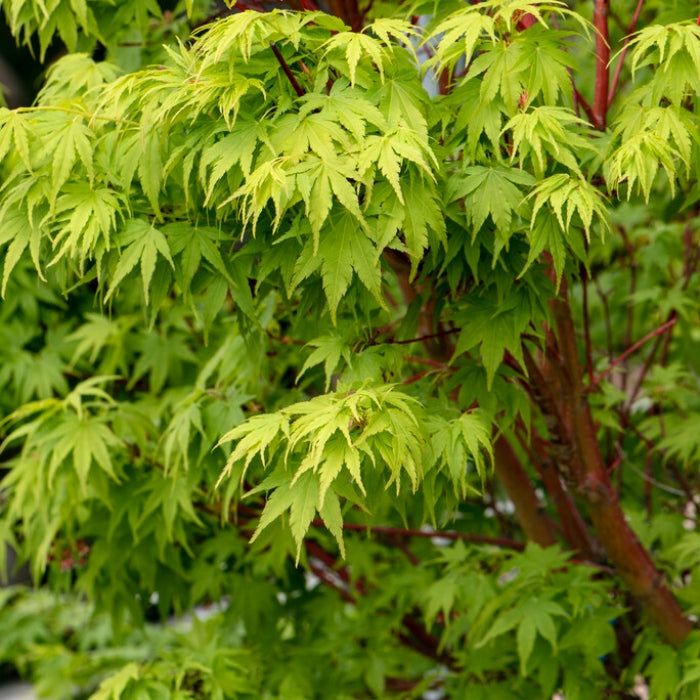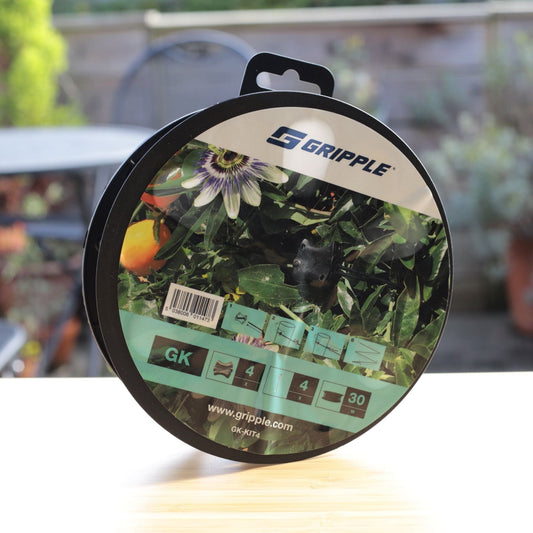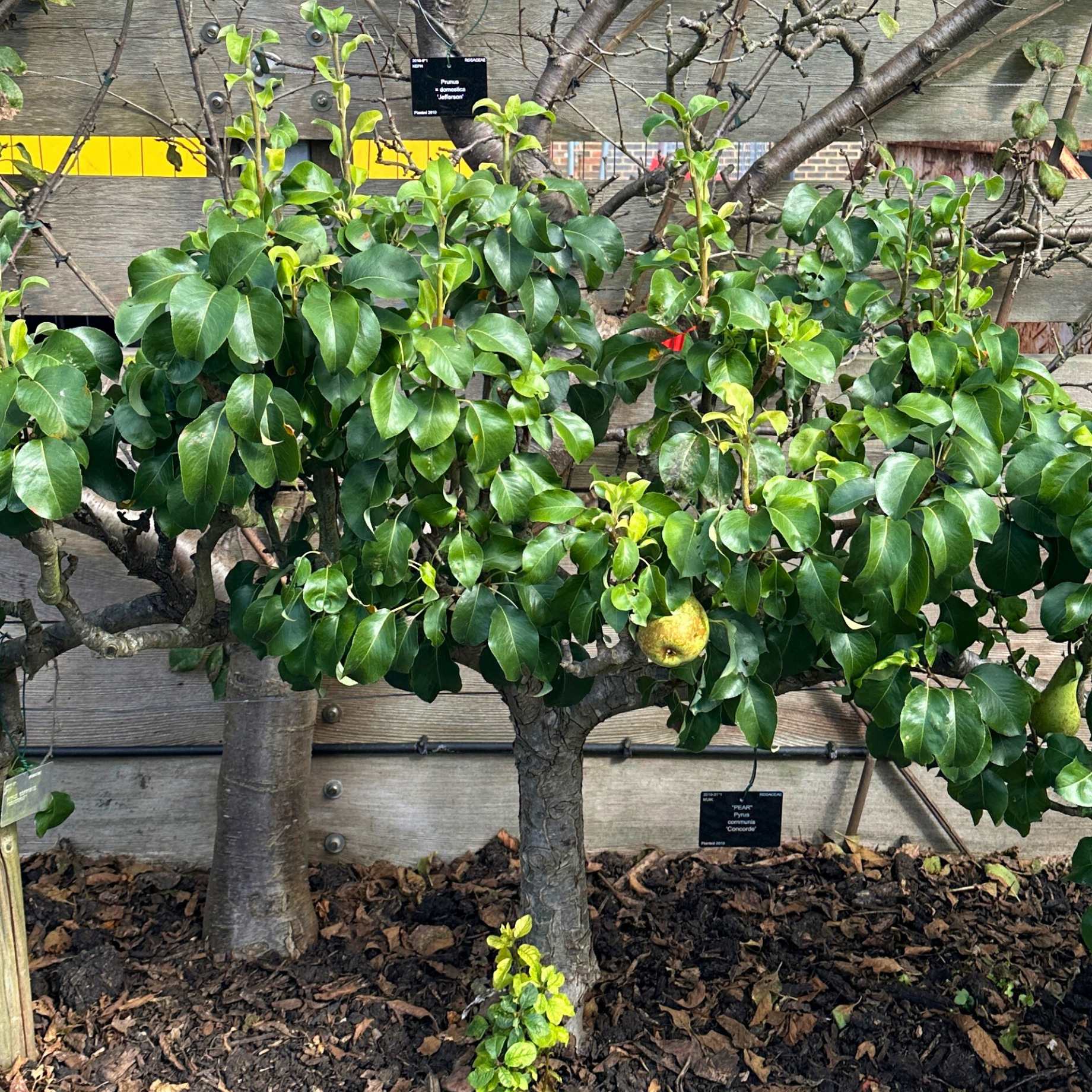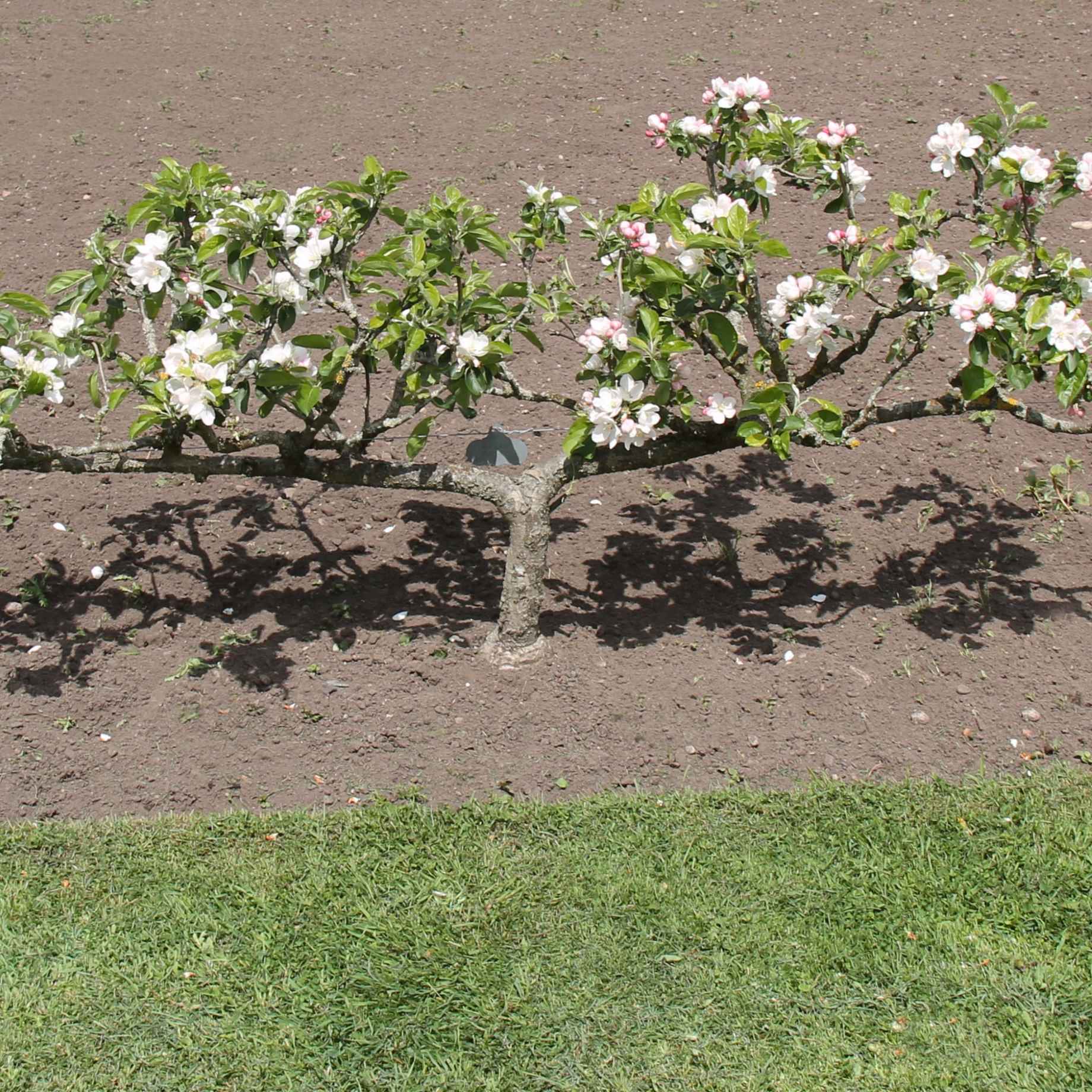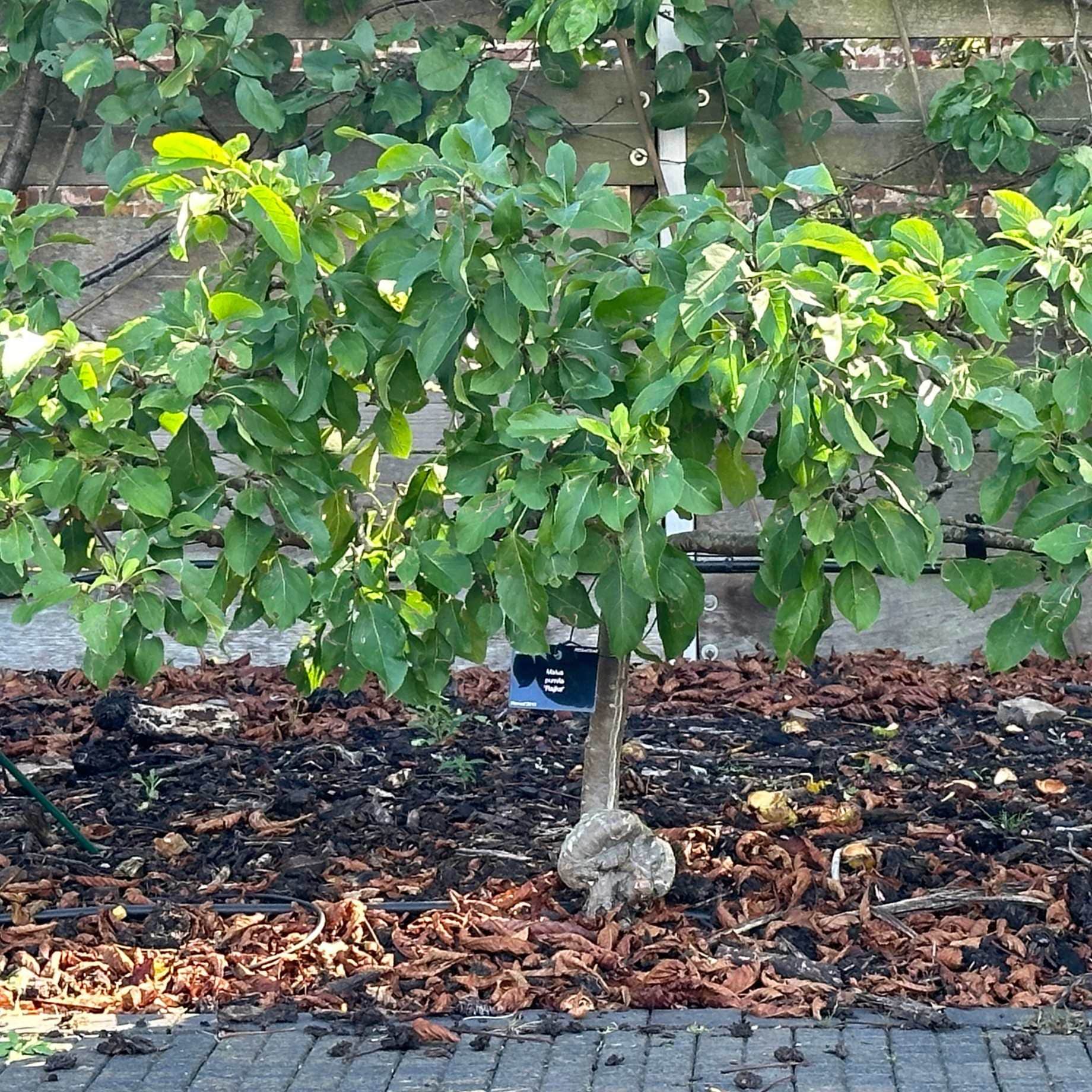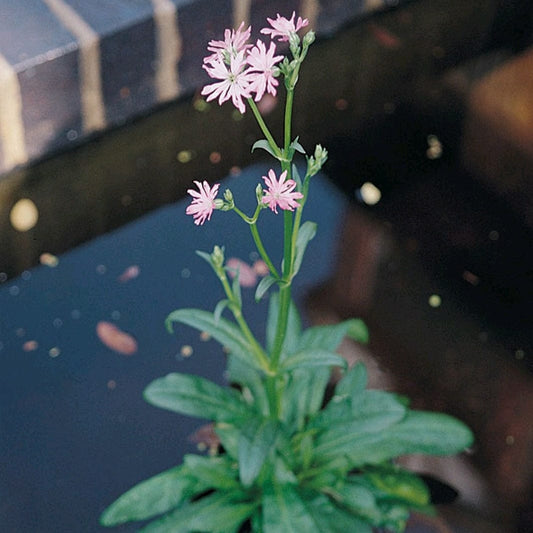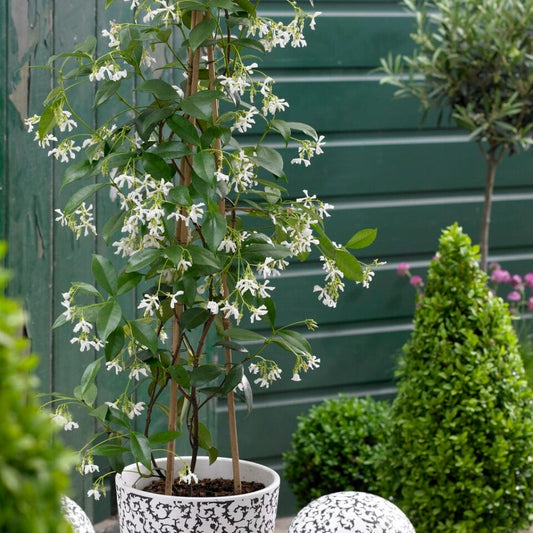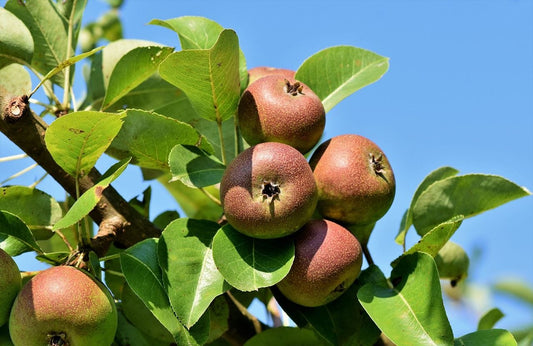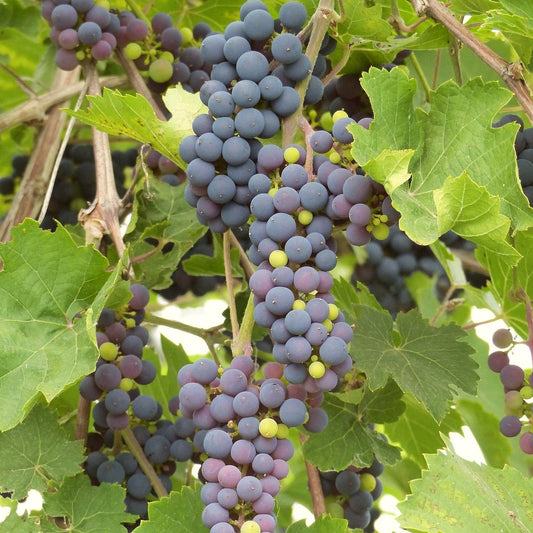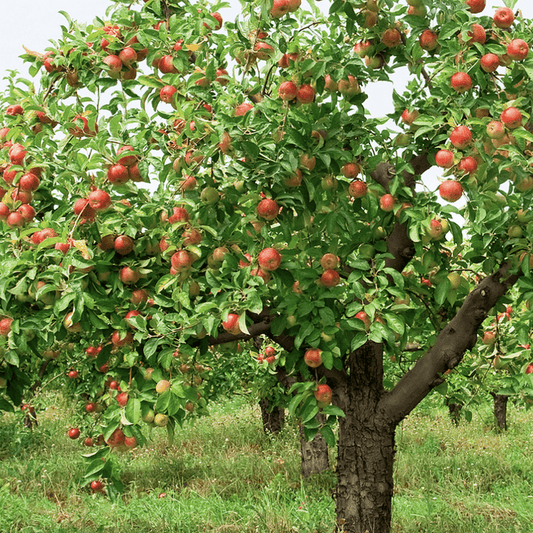Roots' Cotswolds Valley Nursery
Meet Mike
Tree-growing skills honed right across the globe
Having started out in Australia, studied in Northern Ireland and volunteered at an organic farm in Sweden, it’s fair to say Mike’s done his fair share of travel on his horticultural journey, so far! Having happily laid down roots here at Roots, Mike is the don behind our tree-growing operation, imparting each and every one of his globally-honed skills to benefit your garden. Grown in our purpose-built nursery, in the ideal climatic conditions of the fertile Vale of Evesham, we’re proud to supply only the happiest, healthiest and hardiest trees.
Need help picking?
Stepover Fruit Tree FAQs
What is a stepover fruit tree?
A stepover fruit tree (sometimes referred to as a single-tiered espalier) is a trained tree comprising a short central leader (between 45 and 60cm tall) topped with a pair of branches (or arms) that grow horizontally to provide a low-growing, T-shaped tree you can, quite literally, step over.
Which fruit trees can be trained as stepover trees?
Pomes like apples and pears are the most common fruit trees to be trained into a stepover shape. Other fruits, like cherries and peaches, for instance, aren’t typically suitable for stepover training, mainly due to their vigorous growth and more brittle branches which make bending them more difficult.
How much space do I need to grow stepover fruit trees?
You don’t need much space at all to grow a stepover fruit tree, given that they only grow to around half a metre in height and two to three metres in width (though they can be pruned to keep to an even shorter length). This makes them an ideal option for gardens where space is at a premium.
Do stepover fruit trees produce full-sized fruit?
Yes, stepover fruit trees produce full-sized fruit, though given their comparatively small stature, their yields might be a bit smaller than you’d expect from a normal freestanding fruit tree – you should still get a good crop of fruit, though, if you properly take care of your tree.
What rootstock is used for stepover fruit trees?
Stepover fruit trees are grown on dwarfing rootstocks like M9, M26, M27 or Quince C. These rootstocks ensure the tree doesn’t grow very tall, which is obviously one of the main factors determining whether your stepover tree is a success or not. If your tree is too tall to step over, it’s not a stepover…
When should I plant a stepover tree?
If you’ve ordered a bare root stepover tree, this should be planted in the dormant season between late autumn and spring (when they’re dormant). You can plant potted stepover trees at any time of year, just make sure the ground isn’t frozen, waterlogged or too dry, and aim to plant on a fair, dry day.
How do I prune stepover fruit trees?
Once your stepover shape is properly established, give your tree a prune every summer, trimming new growth from your tree’s pair of arms back to just a few leaves beyond the basal cluster. For any shoots that have previously been pruned, cut these back to just one leaf beyond the basal cluster. Check out our guide to stepover apple trees for more information.
How do I train a fruit tree as a stepover?
If you haven’t bought a pre-trained tree, then you’ll need to establish the stepover shape yourself. To do this, you can either use the cordon (one-arm stepover) or espalier (two-arm stepover) method. For the cordon method, you’ll bend the top section of the central leader towards your wire support and tie it in. For the espalier method, cut the leader back to just above your wire, then take shoots that have formed from the top-most buds and tie these into your wire. These shoots will become your stepover’s arms.
How long does it take for a stepover fruit tree to bear fruit?
Most stepover fruit trees will bear fruit two to three years after planting, though this can vary from variety to variety, as well as upon growing conditions (like weather and soil conditions). Fruit trees grown on dwarfing rootstocks typically bear fruit sooner than those on vigorous rootstocks.
Do stepover fruit trees need staking or support?
Yes, stepover fruit trees need staking and support. Your main stem will benefit from being staked, particularly if you’re going to be bending it using the cordon training method. Plus, you’ll need a horizontal wire support (stretched between two posts) against which you can tie in your tree’s branch(es).
Can stepover trees be grown in containers?
You can grow a stepover tree in a large container, but like all container-grown trees, it will require more regular watering and feeding than those trees grown in the open ground. Plant container-grown stepovers in a loam-based compost like John Innes No. 3 and give your tree a feed with fertiliser in April.
How much sunlight do stepover fruit trees need?
Stepover trees need a fully sunny position (at least six hours of direct sunlight per day) to perform their best and produce good crops of fruit. Whilst your tree will still grow in partial shade, it won’t do as well.
Fighting plastic waste
Delivering fresh from the nursery
Supporting UK growers
